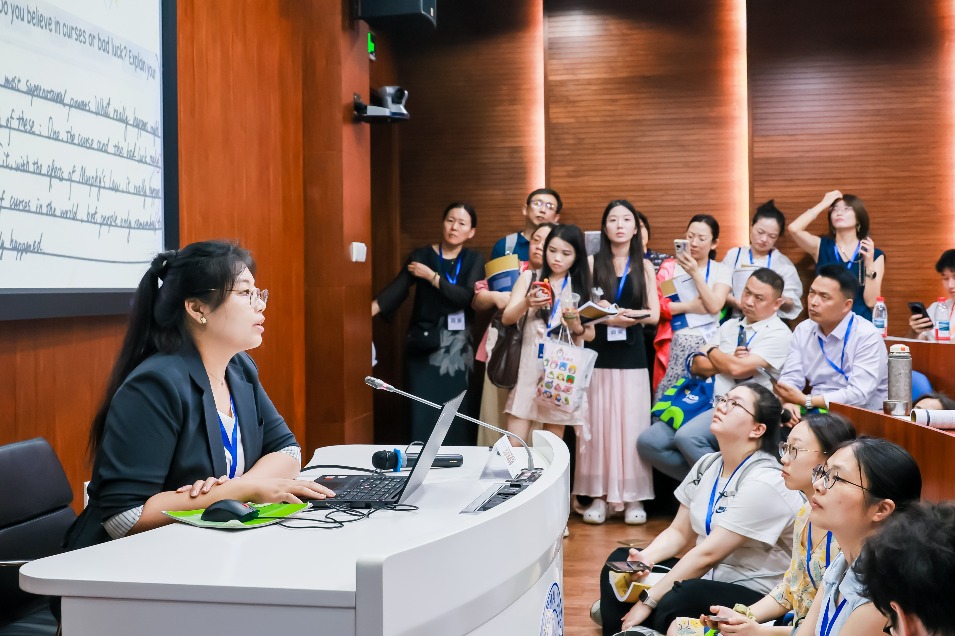Adopt a heritage building and help save a culture
Businesspeople are increasingly footing the bill to restore, maintain dilapidated historic structures

"It looked totally different 10 years ago," said Huang Wensheng, recalling the dilapidated condition of the Longwang Temple in Quwo county, Shanxi province.
Back then, Huang was chair of the Quwo Association of Industry and Commerce and had been convinced by the local cultural heritage bureau to become one of the first "adopters" in the county of a rundown building.
"Weeds grew wildly out of the eaves, willow branches tangled together and all items able to be lifted by men had been carried away," he said. "Even stone pillars were stolen."
Shanxi has 53,976 immovable cultural relics, ranging from national to county level, the most of all provincial-level regions in the country. Quwo has a history dating back more than 3,000 years, and boasts more cultural heritage buildings than the county government can look after.
The idea of having private input into the preservation and restoration of heritage buildings took seed in 2002.
Sun Yonghe, head of the Quwo Cultural Heritage Administrative Bureau, gave a green light to private donations for the renovation of a memorial archway built in the Ming Dynasty (1368-1644).
The initiative was welcomed by residents, especially wealthy businesspeople, who wanted to keep their county's historical memories intact.
The county government said it was only capable of taking care of 110 of the 526 historical buildings in its jurisdiction.
Private help
In 2010, the Quwo people's congress, the local legislature, rolled out a guideline on the "adoption" of heritage buildings. Liu Wei, then chair of the local congress and an ardent supporter of the initiative, invited entrepreneurs to take part in an inspection tour of heritage buildings in the county that were in poor condition.
Liu said the dilapidated condition of the buildings prompted many of the entrepreneurs to immediately make donations for "meaningful work" on the sites.
In 2011, Huang adopted Longwang Temple after a "long talk" with Sun. The temple was recognized as a county-level cultural heritage building in 1985, and had been used by the government as a granary.
Huang estimated 700,000 yuan ($106,200) was enough for the work and accepted the adoption "without hesitation". However, so far he has spent more than 3 million yuan on the restoration work. "It is like adopting a child. Once I decided to do it, I had to do it well," Huang said.
Sun said businesspeople were more likely to adopt a heritage building close to their homes or enterprises, as they had greater emotional attachment to the structure and it was a good way to serve their local community.
In Hengdong village, Jiangxian county, Shanxi, 70-year-old Liang Mingzhi is one of seven adopters of the Chengtang Temple, which was built in the Yuan Dynasty (1271-1368).
The temple was adopted in 2000 after "painstaking" lobbying of the county government, which stressed the urgency and importance of the work.
Liang said he hoped more people succeeded in adopting temples to extend the buildings' lives.
Idea spreads
Inspired by successful programs in counties like Quwo, the cultural heritage adoption program was officially launched across the province in 2017.
Over the past three years, 126 heritage buildings have been "adopted" by nongovernmental parties in Shanxi who have contributed 200 million yuan for the renovation work.
"We are glad to see the government has officially launched the overdue adoption program, and now it is the government that takes the initiative to bid for adopters of the cultural heritage," Liang said.
Shanxi people are happy to see more and more ancient buildings being restored and protected.
Xie Xinquan, 72, said the ancestral temple of the Xie family in his home village of Beiniuchi in Wanrong county had been renovated thanks to private donations. "The temple is important to the offspring of the Xie family to know their past," he said.
In 2018, the State Council, encouraged by the local government programs, welcomed private investors to take part in protection of cultural relics for the first time.
Without changing the cultural heritage buildings' ownership, the government has invited social organizations, enterprises and citizens to fund the renovation of cultural relics. The government supervises the renovation projects and provides professional guidance for the work.
Experts argue a big gap remains when it comes to funding the restoration of county-level historical relics, as there are a large number of them in poor condition.
Sun, the Quwo county official who started the adoption idea, thinks it is only a makeshift solution, as local governments lack the funds to renovate the heritage buildings themselves.
"Without proper maintenance, some buildings might collapse in two to three years," Sun warned.


Today's Top News
- China and US agree to push for extension of tariff pause after Stockholm negotiations
- US, China trade talks candid, in-depth, constructive, says China intl trade representative
- China unveils delegation for Chengdu World Games
- Xi urges youths to champion vision of peace
- All-out relief efforts underway in flood-hit regions
- Crucial to foster stable China-ROK ties






























